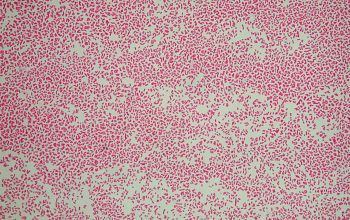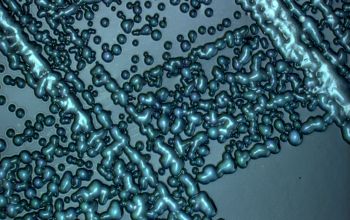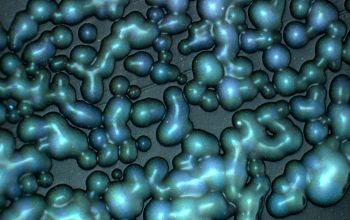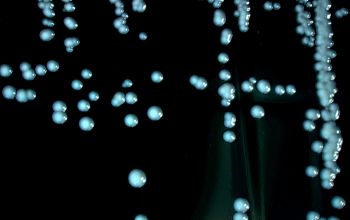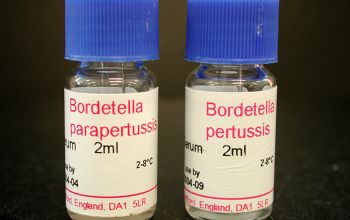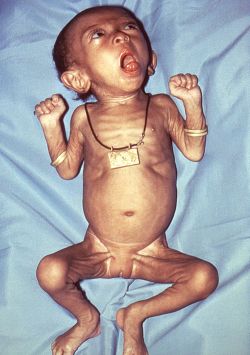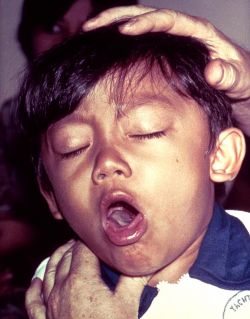YOUTUBE
A video of a boy with pertussis (whooping cough), demonstrating the cough's distinctive "whoop" sound.
US Center for Disease Control
Pertussis is a highly contagious bacterial disease that causes uncontrollable, violent coughing. The coughing can make it hard to breathe. A deep "whooping"sound is often heard when the patient tries to take a breath.
photo: Center of Disease Control
LINK
CABARET
The girl with the Whooping Cough
Bordetella pertussis
-
General information
Taxonomy
Family: Alcaligenaceae
Natural habitats
B. pertussis is thought to be a strictly human pathogen
The bacterium is spread by airborne droplets, its incubation period is 7-14 days.
Clinical significance
B. pertussis cause pertussis, or whooping cough.
Pertussis (or whooping cough)
is an infection of the respiratory system characterized by a “whooping” sound when the person breathes in.
B. pertussis continues to circulate in population where high vaccination coverage of infants and children is achieved, because the protection induced after natural infection and vaccination decreases after several years.
Pertussis is most dangerous in infants, and most hospitalizations and death occur in this age group.
The signs and symptoms are similar to a common cold; running nose, sneezing, mild cough, and low-grade fever.
The patient becomes more contagious during the catarral stage of infection, normally two weeks after the coughing begins.
It may become airborne when the persons cough, sneezes, or laughs.
The cough is a crowing inspiratory sound characteristic of pertussis. After a spell, the patient might make a “whooping” sound when breathing in, or may vomit.
Adults have milder symptoms, such as prolonged coughing without the “whoop”.
Infants less than six month also may not have the typical whoop.
A coughing spell may last a minute or more, producing cyanosis, apnoea, and seizures.
When not in a coughing fit, the patient does not experience trouble breathing.
-
Diseases
-
Gram stain
Very small Gram negative coccobacillus,
1-2 µm,
they appear singly or in pairs.
The cells are occasionally filamentous that can elongate several µm in length, usually observed in clinical samples.
-
Culture characteristics
-
Obligate aerobic
5-10% CO2 improves the growth
Regan-Lowe-medium
After 3-7 days the colonies become visible.
Colonies are very small, round, smooth, convex, pearly and glistening, greyissh-white and butyrous .
(mercury-like-droplets)
Appear in 3-7 days
BA: no growth
McConkey: no growth
BBAØ: no growth
Isolates
of B. pertussis and, less so, of B. parapertussis should not be subcultured because they undergo a phase change as described above.
If strains have to be stored, this should be done with primary clinical isolates, and these should be frozen in glycerol at -70ºC.
Biosafety level 2 is strongly recommended.
Regan-Lowe Charcoal Agar
plates are used for the isolation of B. pertussis.
It consist of charcoal agar as a basal medium supplemented with cephalexin to inhibit bacteria.
-
-
Characteristics
-
References
James Versalovic et al.(2011) Manual of Clinical Microbiology 10th Edition
Karen C. Carrol et al (2019) Manual of Clinical Microbiology, 12th Edition

